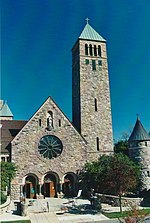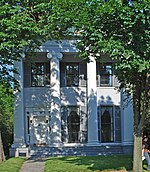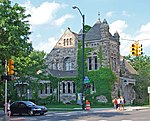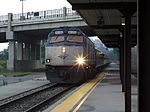Stefan T. Vail Cooperative House
1961 establishments in MichiganAdobe buildings and structuresCooperatives at the University of MichiganHouses completed in 1853Houses in Ann Arbor, Michigan ... and 2 more
Residential buildings in MichiganStudent housing cooperatives in the United States

In Ann Arbor, Michigan, Stefan T. Vail Cooperative House (or Vail House) is a housing cooperative for college students at the University of Michigan, Washtenaw Community College, and Eastern Michigan University. A member of the Inter-Cooperative Council (ICC) in Ann Arbor, Vail house is named after Stefan Valavanis, a former ICC President who became a notable economist. It is one of only two known adobe buildings in Ann Arbor.
Excerpt from the Wikipedia article Stefan T. Vail Cooperative House (License: CC BY-SA 3.0, Authors, Images).Stefan T. Vail Cooperative House
Lawrence Street, Ann Arbor
Geographical coordinates (GPS) Address Nearby Places Show on map
Geographical coordinates (GPS)
| Latitude | Longitude |
|---|---|
| N 42.283863888889 ° | E -83.741916666667 ° |
Address
Lawrence Street 603
48104 Ann Arbor
Michigan, United States
Open on Google Maps










